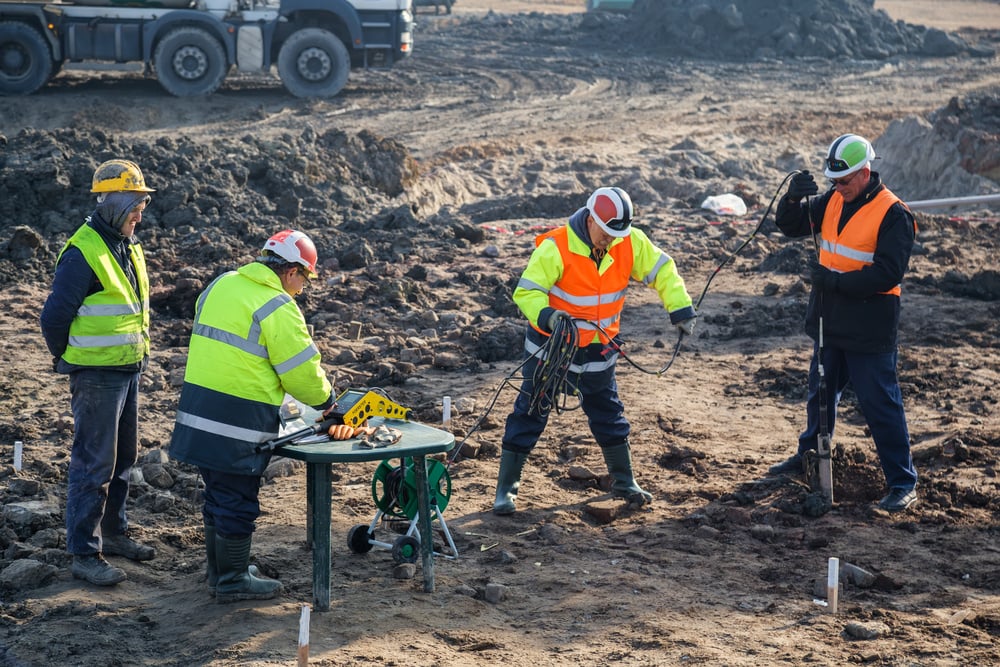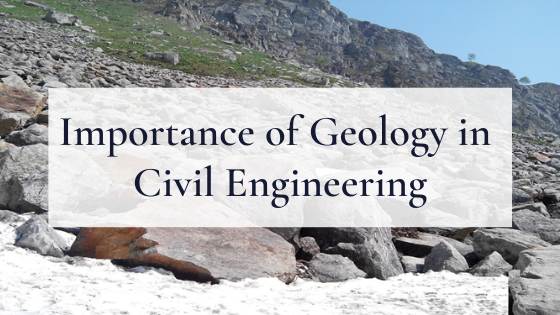Geotechnical Engineering For Construction Projects - The Facts
Geotechnical Engineering For Construction Projects - The Facts
Blog Article
The Basic Principles Of Geotechnical Engineering For Construction Projects
Table of ContentsNot known Factual Statements About Geotechnical Engineering For Construction Projects Getting The Geotechnical Engineering For Construction Projects To WorkGetting The Geotechnical Engineering For Construction Projects To WorkWhat Does Geotechnical Engineering For Construction Projects Do?9 Simple Techniques For Geotechnical Engineering For Construction Projects
As a result, throughout the examination, it is necessary to drill at the needed depth and the called for number of holes as per the recommendation of the Canadian Structure Style criterion. In some cases, the proprietor could save some Geotechnical Examination price but end up investing more than the expected during the construction expense.The responsibilities of the geotechnical consultant involve providing product screening for construction support. Geotechnical Engineering for Construction Projects. Geotechnical designers analyse all the field test records to guarantee that building is taking place according to the job specification. During building, a confirmatory test for soil compaction is done on-site to guarantee that no future negotiation happens
After the concrete is poured -7 days and 28 days- examinations are performed on concrete examples collected from the site to ensure that the concrete put meets the style requirement. Asphalt core is taken after the Asphalt is laid and compacted to validate that it meets the design standard. All research laboratory test reports are evaluated by the Geotechnical Engineer to guarantee that it fulfills the task requirements.
Little Known Facts About Geotechnical Engineering For Construction Projects.

Geotechnical design plays a vital role in guaranteeing the stability of building tasks. Geotechnical engineering is a vital branch of civil design that focuses on understanding the behaviour of planet materials, such as dirt and rock.

For a trustworthy foundation and a smooth construction process, trust to supply the competence you require. Contact to obtain professional suggestions and geotechnical services customized to your following task.
The 30-Second Trick For Geotechnical Engineering For Construction Projects
When embarking on a land growth project, recognizing the ground under your feet is as important as the frameworks you plan to build over it. Our Geotechnical Design team analyse the ground, ensuring it is ideal for the proposed advancement while offering you with the info needed to satisfy your job goals.
Geotechnical Engineering takes a look at the development of the ground, as it is the foundation for all jobs. Where frameworks require to be created with respect to the ground conditions; ground conditions (e.g., soft ground) may call for enhancing relying on the dimension of the intended framework. Before building, you need to find out about the groundwater, dirt framework, and liquefaction likelihood of your land.
For websites that are not connected on the neighborhood authority infrastructure added website examinations would certainly be required to offer technological inputs for on-site stormwater and wastewater. We have experienced Geotechnical Designers based in each workplace, sustaining your geotechnical requirements across the country. Connect to us to go over how we can support your following task.
These records are tailored to meet the specific requirements of a job and include style parameters and guidance for the construction of a series of synthetic structures. Along with giving working as a consultant solutions covering areas such as incline stability and load-bearing abilities for different products, these designers take on research and advancement read review activities to improve approaches, devices, products knowledge and analysis covering entire lifecycles.
How Geotechnical Engineering For Construction Projects can Save You Time, Stress, and Money.

Nevertheless, rates of pay typically raise as your understanding and skills grow, with guidelines indicating a graduate starting wage of between 18,000 and 28,000 per year in the UK. This climbs to 26,000 to 36,000 with a couple of years of experience and after that getting to 40,000 to 60,000+ for elderly, chartered or master engineers.
However, with the ideal application it is possible to understand the occupation and gain entry to a difficult yet fulfilling and vital job. A rock hound would certainly require to re-train to become a geotechnical engineer, although there is lots of cross-over between the 2 professions, which could make this less complicated - Geotechnical Engineering for Construction Projects. Geologists need to have an understanding of soils, rocks and various other materials from a clinical viewpoint, while geotechnical designers story their expertise of issues such as soil and rock mechanic, geophysics and hydrology and apply them to engineering and ecological projects
When starting, these designers will certainly have a tendency to deal with less complicated projects, developing knowledge and experience prepared for more difficult job later on. Geotechnical designers have a tendency to specialise in certain locations as they grow in experience, concentrating on particular frameworks such pop over to this site as trains, roadways or water. These designers additionally collaborate with sustainable power, offshore and onshore oil and gas, nuclear power, and extra.
More About Geotechnical Engineering For Construction Projects
The time taken to become a geotechnical designer relies on where you are based, where you research and what degree of education you wish to obtain before entering the office. As an example, are you mosting likely to explore an apprenticeship, take an university degree or work with towards a Master's or PhD? Generally-speaking it takes 3-4 years to reach the fundamental demands to begin an occupation as a geotechnical designer.
These operations make it possible for professionals to assess a host of soil auto mechanics including weight, porosity, void-to-solid fragment proportion, permeability, compressibility, maximum shear strength, bearing ability and contortions. If the framework requires a deep foundation, designers will utilize a cone infiltration examination to estimate the amount of skin and end bearing resistance in the subsurface.
When analyzing a slope's equilibrium of shear anxiety and shear stamina, or its capability to stand up to and undergo informative post movement, rotational slides and translational slides are typically taken into consideration. Rotational slides fall short along a rounded surface area, with translational slides taking place on a planar surface. A professional's objective is to identify the conditions at which a slope failing can occur.
Typically, findings recommend that a site's dirt ought to be treated to enhance its shear strength, tightness and leaks in the structure before style and building and construction. When it comes time to set out structure plans, experts are increasingly concentrated on sustainability, even more specifically exactly how to reduce a foundation's carbon impact. One strategy has actually been to change 20 percent of a structure's cement with fly ash, a waste item from coal fire nuclear power plant.
Report this page